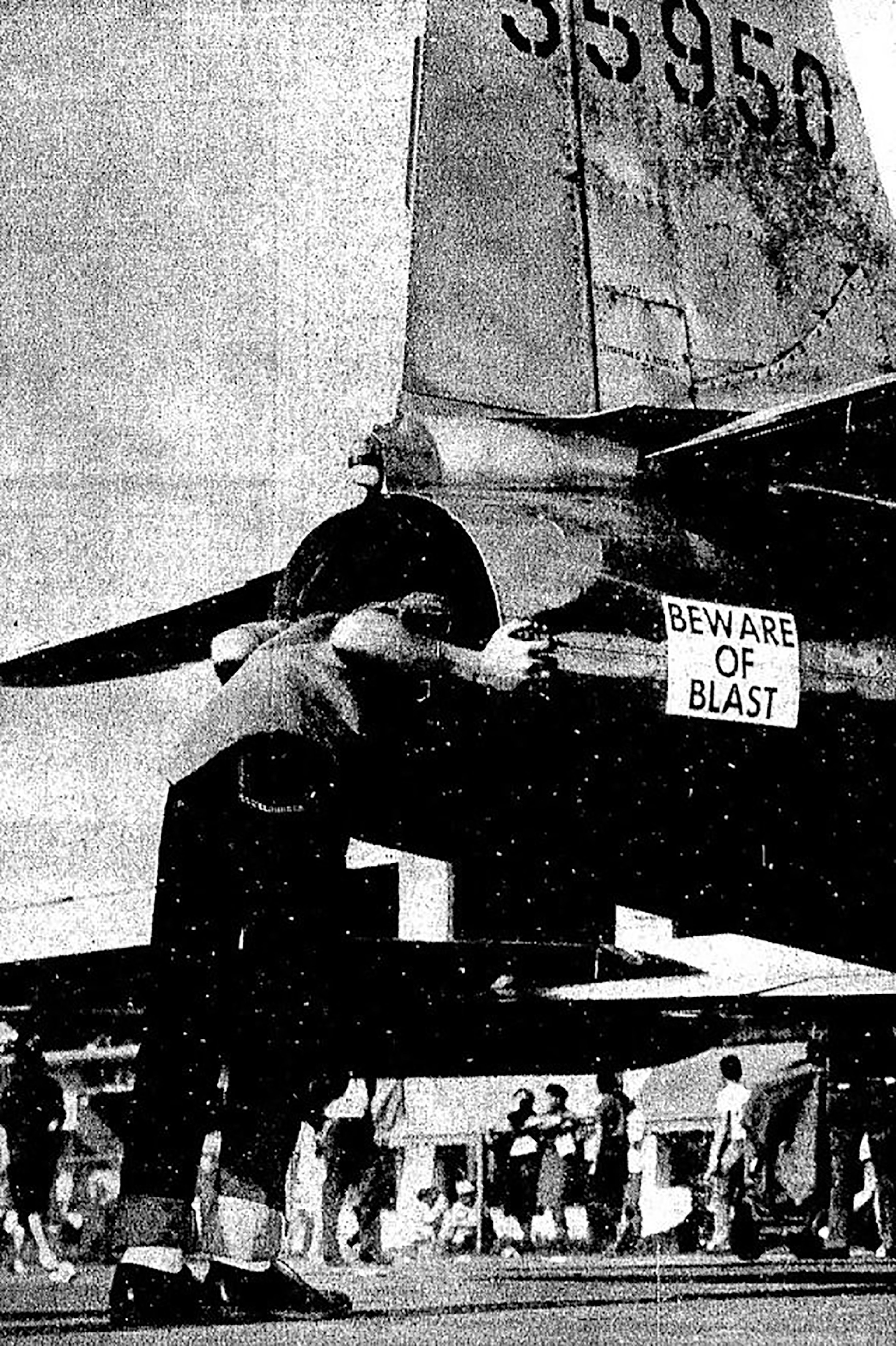A turnout estimated at possibly 10,000 to 12,000 saw aircraft of numerous varieties, parachute jumps, aerial fire fighting techniques and precision motorcycle riding at the annual Lewiston Air Fair yesterday.
Spectators by the thousands toured military, private and commercial planes, watched helicopters perform and ventured into the air on passenger hops.
The event, sponsored by the Aviation Committee of the Lewiston Chamber of Commerce, went according to schedule, with the addition of one parachute jump which proved to be a crowd pleaser. That was a two-chute descent by Robert Maxwell, head of the Spokane Parachute Club, which provided the jumpers.
The Lewis Clarkians provided band music between events. Clyde Martin, chairman of the Aviation Committee, explained plans for a new runway for which a bond issue is needed. County residents will be asked to approve the $700,000 issue at the November general election.
He called the attention of spectators to a huge Air Force C124 Globemaster and said it was able to land without a heavy load. But that plane and other large ones would not be able to land on Lewiston Airport while loaded, he said.
Long Way Down
Three members of the Spokane club made two group jumps. On the first jump the trio baled out at 14,000 feet and opened chutes at 2,500 after falling free for 11,500 feet. On the second the jumpers left the plane, owned by Clifford Hinkley and piloted by Richard Wagner, both of Lewiston, at 15,000 feet and opened their chutes at 2,500. Maxwell made an unscheduled jump alone from 4,000 feet, then released himself from his parachute, fell free a short distance and opened his second chute.
All the jumpers landed on the grass between the ramp, in front of the administration building, and the north-south runway. Some members of the club, including Maxwell, had made practice jumps here in the past.
Ralph Rensink, a Hillcrest Aircraft Co. pilot, used a Navy World War II TBM, a torpedo bomber, to demonstrate the use of chemicals in fire fighting. On the first pass he dumped the jelly-like chemical on a small fire beside a runway, smothering it completely. He made a second pass but there was no fire left to fight. The TBM, owned by Hillcrest, is used for aerial spraying.
Mustang Flies Over
Rensink later made two passes over the field in his P51 Mustang, a World War II fighter plane which he bought from the Canadian Air Force. He has modified the single-seat plane to add a second seat and took Milton Lind, a Hillcrest mechanic, along on the flight.
The show opened with a flyover of 19 planes owned by Lewiston-Clarkston men. There also was a flyover of four Air Force F106 delta-winged jet fighter planes from Geiger Field, Spokane. The planes, capable of speeds of some 1,500 miles per hour at high altitudes, cruised over the field at 500 m.p.h.
Vernon D. Speer of Lewiston, flying his twin-engined Cessna, nosed out Ned Paffile of Lewiston, driving a 1962 Ford, in a three-eighths-mile race along the runway. The plane was airborne by the time it reached the finish line.
Helicopter Shows Tricks
Ned Gilliand, a Hillcrest pilot, demonstrated the versatility of the helicopter by rolling a barrel across the field by nudging it with the craft’s landing runners and using a runner to flick the ashes off a cigarette in the mouth of a man on the ramp.
The Banana Belt Cruisers, a Lewiston motorcycle club, did figure-eights, cartwheels and other precision riding drills. Model airplanes on control wires did aerobatics.
Planes on display included a PV2 Neptune from the Widbey Island (Wash.) Naval Air Station, a patrol plane with two propeller engines and two jet engines; an Idaho National Guard T33A, a single-engined jet fighter plane from Boise; the Globemaster, from McChord Field, Tacoma, and various private planes.
This story was published in the Oct. 1, 1962, edition of the Lewiston Tribune.




